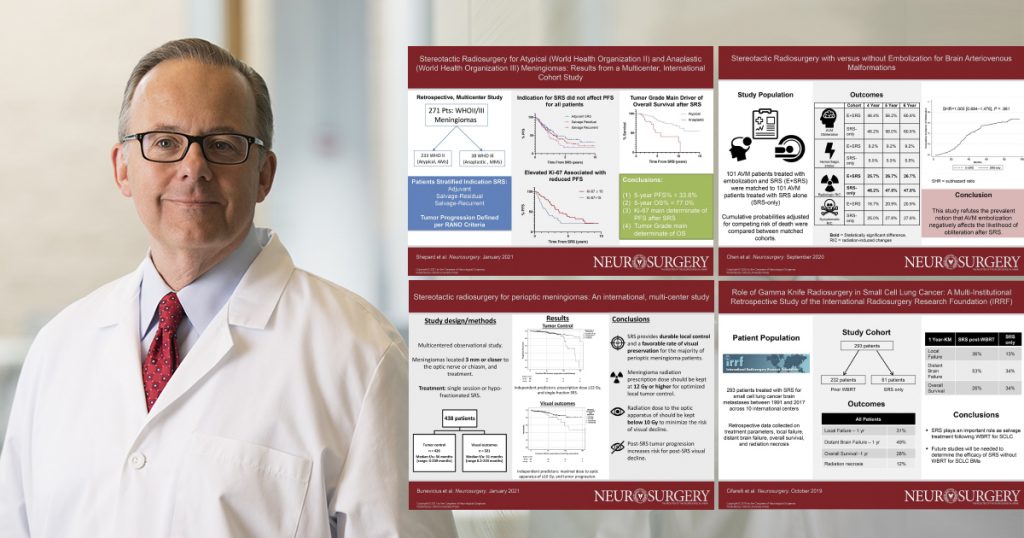How can Gamma Knife radiosurgery help patients with various types of brain tumors and blood vessel abnormalities? Four studies from Dr. Ronald Warnick and co-authors from the International Radiosurgery Research Foundation (IRRF) have provided valuable research aimed at improving the effectiveness and safety of Gamma Knife radiosurgery, a minimally invasive surgical procedure that uses multiple radiation beams aimed at a single point to treat brain tumors. These studies earned recognition in a special visual abstract edition of Neurosurgery 20/20.

“The researchers and clinicians of the International Radiosurgery Research Foundation are committed to advancing our evidence-based knowledge on the effectiveness of Gamma Knife for brain tumors and other diseases,” said Dr. Warnick, a neurosurgeon at Mayfield Brain & Spine and a co-director of the Gamma Knife Center at The Jewish Hospital – Mercy Health. “These studies are laser focused on enhancing patient outcomes by harnessing the strength of multicenter research.”
The studies included:
Stereotactic Radiosurgery for Atypical and Anaplastic Meningiomas
- Atypical and anaplastic meningiomas are more difficult to cure than benign meningiomas, and there have been very few studies that have examined the effectiveness of Gamma Knife to treat these challenging tumors.
- The IRRF, including Dr. Warnick, reported the largest study of higher-grade meningiomas treated with Gamma Knife in the medical literature.
- Gamma Knife was effective at controlling higher-grade meningiomas for several years, but additional treatments were often required to achieve long-term tumor control.
Stereotactic Radiosurgery with vs. without Embolization for Brain Arteriovenous Malformations
- This IRRF study aimed to better understand the outcomes of embolization and Gamma Knife on brain arteriovenous malformations (AVMs), an abnormality that carries a risk of rupture resulting in brain hemorrhage. Embolization closes a portion of the AVM to facilitate another procedure.
- Dr. Warnick and co-authors found that AVM embolization followed by Gamma Knife led to comparable rates of obliteration of the AVM, which refuted the results of prior studies.
- Therefore, embolization can be used for large AVMs to reduce the size to that appropriate for Gamma Knife without concerns about decreasing the effectiveness of radiosurgery.
Stereotactic Radiosurgery for Perioptic Meningiomas
- Dr. Warnick and his IRRF colleagues tracked the effectiveness and safety of Gamma Knife for treating meningiomas located within 3 mm of the optic nerves (perioptic).
- Among 438 patients treated at a dozen IRRF centers, the authors found that Gamma Knife achieved long-term tumor control with acceptable rates of vision preservation in this high-risk group.
The Role of Gamma Knife Radiosurgery in Small Cell Lung Cancer
- Only limited data exist on the use of Gamma Knife for brain metastases in patients with small-cell lung cancer (SCLC). These patients are typically treated with whole brain radiation therapy (WBRT) at the time of diagnosis.
- Dr. Warnick and the IRRF team found that Gamma Knife is effective in the treatment of recurrent brain metastases from SCLC after prior WBRT.
- A separate ongoing trial will determine the value of radiosurgery in the upfront management of SCLC brain metastases and potentially challenge the standard application of whole brain radiation therapy in this patient group.